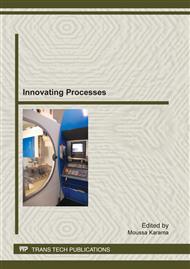p.116
p.128
p.143
p.154
p.166
p.177
p.187
p.200
p.210
Orthotropic Model Plate under Shear-Bending
Abstract:
The aim of this paper is to analyse the behaviour of various shear deformation laminated plate theories previously proposed by Reissner [1] , Reddy [2] and Touratier [3]. The accuracy of those theories is compared on two problems laminates for which an analytical solution has been given by Timoshenko for isotropic and Lekhniski for anisotropic plate. Retaining the best model among those compared, interlaminar continuity conditions have been taken into account in this best response for laminates and show how important these interlaminar conditions are to improve accuracy by comparison with the finite element solution. Models which have been introduced are two-dimensional ones and imply the three standard generalized displacements associated with shear-bending. Studies limited to symmetric and orthotropic plates. Finally, an analysis of edge effects has been conducted for a circular symmetric orthotropic clamped plate. Edge effects have been observed with refined shear deformation theories but not with the first-order shear deformation theory due to Reissner.
Info:
Periodical:
Pages:
166-176
Citation:
Online since:
December 2011
Authors:
Price:
Сopyright:
© 2012 Trans Tech Publications Ltd. All Rights Reserved
Share:
Citation:


